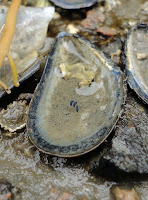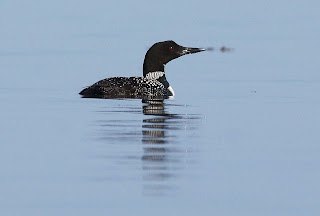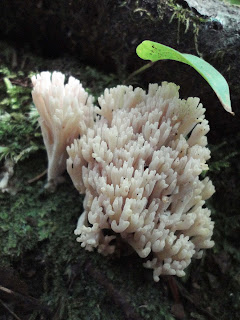 |
| dewey tussock photo by Sylvia Reiss |
Welcome to the Vinalhaven Sightings Report
September 15thish, 2013
Brought to you with the kindly support of the VLT and the MCHT
Have you seen any Monarchs lately?
 |
| if you see something, let us know photo by John Drury |
Business: Contact us – vinalhavensightings@gmail.com . ‘nuff said
Tiit trick - click on the pictures to enlarge.
We beg your pardon....This post was very close to being considered "done" when uploading photos and working on the lower half of the post (no kidding) was not allowed for some reason by the blog. The cursor automatically jumps to the top of the blog while editing. Long story short - read 'em weep, might not be so pretty (edited) down at the bottom, little clunkily written even. And photos were not able to upload, and spell check didn't work, but its time to post so here we go!!!!!!!........
 |
| Hawks are flying by the island daily |
Upcoming Events: Hawk watch – Lane’s Island – Saturday Sept. 28th, 10am – 2pm.
The Great Maine Outdoor Weekend (http://greatmaineoutdoorweekend.org/)
is upon us (not right upon us, still over a week away) and we (the royal we)
are lined up to offered a hawk watch to remember out on Lane’s Island. Saturday September 28th from
10am- 2pm over at Lane’s Island, come and go as you please. We’ll plant
ourselves (way to plant, ann) at the picnic table by the graveyard and keep our
eyes on the skies for the prize which are hawks, falcons, eagles, a harrier and
an osprey.
 |
| black-billed cuckoo photo by Rick Morgan |
Sightings - Raptors being seen these days – Bald Eagle, Osprey, Broad-winged Hawk,
Merlin (several), Northern Harrier, Sharp-shinned Hawks. Turkey Vultures around as well, they are just
not raptors.
Video: red-necked
grebe pair close to shore at State
Beach for the past few weeks. Here’s a video
 |
| young shag photo by Jane Blair |
Migration – Reach
Road – lots of Hummingbirds …. Greens Island – early September – Blue-grey
gnatcatcher, prairie warbler, blackpoll, red-eyed vireo, parula, yellow
warbler, redstart (RST), magnolia warbler (MW), black throated green warbler
(BTG), black and white warbler (B&W)…
Armbrust Hill –
(9/9) – 6 Yellow-rumped Warblers, 5 BTG,
RST, Yellowthroat, Red-eyed Vireo, Flickers, GBH, Black-bellied Plover,
Semi-palmated Plover, Least Sandpiper, Greater and Lesser Yellowlegs, Catbird,
Red-breasted Nuthatch, Black-capped Chickadee, Flicker, Blackpoll Warbler, Hairy
Woodpecker,
 |
| plovers in the mist |
 |
| red-billed tropicbird, last seen august 25th or so see ya next summer! photo by John Drury |
Roadkill – Lots
of snake movement these days, which means lots of snake roadkill over the last
month or so. Most days I might see 3 or
4 squished on the road (new ones added each day) and 1 or 2 alive on the road
or in the woods. Notable bike ride – (9/14)
10 snakes today on the road – 1.5 were alive. 8 were dead, one (a green snake)
was alive but I almost ran over, and one (a red-bellied) was in the process of
dying after it got runned over moments before I peddled up to the scene.
They were all fresh. Half were Green Snakes (5), 3 Red-bellieds, and 2
Ring-necked snakes. All the large snakes (non-ring-neckeds) were gone overnight.
 Let’s make a deal!
– (9/15) And then last night (at this point “a few nights ago”) after sunset,
we were rock hoppin’ and chuckin’ when Leif and I and Amy found this little
greeny down by the salt water in creed cove. Seemed like an odd spot to find
it. Anyway, it took to our warmth readily (we do have a way with dry, cold
blooded animals) and is now in a tank at home. To be released soon so it can
find a spot to overwinter. Or so that’s the deal we’ve worked out. It eats
grasshoppers we found out.
Let’s make a deal!
– (9/15) And then last night (at this point “a few nights ago”) after sunset,
we were rock hoppin’ and chuckin’ when Leif and I and Amy found this little
greeny down by the salt water in creed cove. Seemed like an odd spot to find
it. Anyway, it took to our warmth readily (we do have a way with dry, cold
blooded animals) and is now in a tank at home. To be released soon so it can
find a spot to overwinter. Or so that’s the deal we’ve worked out. It eats
grasshoppers we found out. 
 “Larval Summer” 2013!
– You’ve seen them roadside, in back yards, and even on the backpack you
foolishly brought outside – Caterpillars are around and man are there a lot of
them. Hope you are not one of the handful of people in the world who fear
caterpillars because it is totally Larval
Summer!
“Larval Summer” 2013!
– You’ve seen them roadside, in back yards, and even on the backpack you
foolishly brought outside – Caterpillars are around and man are there a lot of
them. Hope you are not one of the handful of people in the world who fear
caterpillars because it is totally Larval
Summer!
Editor’s note –
there is no official word for someone with fear of caterpillars – a
“larvalphobia” if you will. But if you do a “something” search on fear of
caterpillars you can find a slew of conversations between people with this
affliction. Here’s one from a guy who fears more than just caterpillars, and is
trying to comfort and connect with another larvalphobe….
 |
| woolly bear - classic |
“You’re not alone, I too have the same
phobia ever since I was about 5 or around that age. I also have a phobia of
butterflies, do you also have this fear? If I see either of them I always want
to run away from them as fast as I possibly can! I also fear that when I die
I'll come back as one!!!”
Fear of adult butterflies – now that must suck. I wonder if
he is afraid of butterfly eggs and pupae too. Is he truly metamorphophobic?
Lepidopterially speaking of course.
 |
| yellow, yellow bear - classic |
 |
| sphinx moth caterpillar photo by Linnell Mather |
“Love the Lepid larva (except winter moth)! ” t-shirts
should be sold at the Paper Store!
So something has clicked – wet June?, hot summer? Where the
hell are the warbler young eating these? Here’s a little “Larval Hall of Fame” from
the recent wave of “larval summer 2013”. Thanks to all who have sent in photos.
 |
| which way to zumba? photo by Erin Creelman |
 |
| cool looking caterpillar - Filament bearer photo by Erin Creelman |
Adults are tannish, veiny moths that are “immediately recognizable by pale –tipped, eversible tentacles that extend from dorsum of A2 and A3”. In other words this dude’s got some white danglage off his early abdomen. Check out this link for pictures of the adult and other forms of the larvae.
 |
| so many larva are on the road that asphalt is native habitat |
and there’s more – Tussock moth caterpillars are up to their
regular. Now Tussock Moths and their caterpillars are quite a diverse group,
and many species of Tussock Moth caterpillars can be found on island. Here are
a few.
Editor’s note - In the most recent VSR we mentioned that
Leif is a big fan of the Hickory Tussock Moths caterpillars, and he still to
this day remains a fan. In that post I included these pictures of Leif watching
a White-marked Tussock Moth caterpillar make a cocoon around itself. For some
reason I did not mention the species of caterpillar in the caption and some
thought that we misidentified the caterpillar in the picture for a Hickory
Tussock since it was mentioned in the paragraph right next to the photo. This
was not our intent. We apologize for any confusion concerning the caterpillar
species, we did not mean to imply that that was a Hickory Tussock Moth
individual. So it goes.
And here is a Hickory Tussock Moth caterpillar…
 |
| banded tussock not hanging by a thread |
 |
| unidentified tussock. cute. |
An unidentified Tussock Moth caterpillar. We can only
identify the species identified in the field guides. Caterpillar identification
is fun.
 |
| this is where all the caterpillars are heading |
And so Leif and Amy have had a go of it too with Caterpillars at the school garden. Palmer brought home an Eastern Tiger Swallowtail caterpillar that was brown with the fake eyeballs and stuff. Caterpillars go thru several phases (called “instars”) where their “old” skin and (sometimes) a significant number of organs are discarded. Everything discarded I then re-grown somewhat larger so the caterpillar can grow in size. Somewhat reminiscent of a lobster shedding its exoskeleton. Anyway, in one of the field guides we read that the last instar stage of a Tiger Swallowtail’s time as a caterpillar is bright green. We were stoked! How could we not be. We were expecting maybe even a few more instar stages before it would “go all pupae” (go into a cocoon) on us. Well, we checked the jar in a few days and all we found was this pupae!
Another field guide, which I had just happened to misplace (which happens all the time), which I then
found later, mentioned that the caterpillar turns brown right before “going all
pupae and spraint”. It was time, it was destiny, and it was brown.
 |
| black swallowtail |
and now some caterpillar videos....
 Butterfly – Adults
– On September 13th I was getting prepared to make this announcement two days
later - “It’s September 15th and I have not seen a Monarch adult
this year!”. And then September 14th happened and I crossed paths
with one out at State Beach. I a few shots of him feasting on some “sweet
nectar of the rod – goldenrod flavor”.
There was a moment or two of “yeah! First monarch!” excitement (even a
fist pump) followed almost immediately by the downer anti-excitement thought - “last
one?”.
Butterfly – Adults
– On September 13th I was getting prepared to make this announcement two days
later - “It’s September 15th and I have not seen a Monarch adult
this year!”. And then September 14th happened and I crossed paths
with one out at State Beach. I a few shots of him feasting on some “sweet
nectar of the rod – goldenrod flavor”.
There was a moment or two of “yeah! First monarch!” excitement (even a
fist pump) followed almost immediately by the downer anti-excitement thought - “last
one?”.  |
| red admirals are not monarchs |
Haven’t seen one since. I have asked several folk if they have seen any Monarchs this summer and the answer has been “no” each time. Vinalhaven is not the only spot in Maine noticing a sharp drop in Monarchs, here’s an article in the Bangor Daily News by. Doesn’t make any bold statements. http://bangordailynews.com/2013/09/15/outdoors/monarchs-reign-threatened-sharp-drop-in-maine-butterfly-population-worries-scientists/?ref=comments . And so we repeat the question -Have you seen any monarchs lately?
 |
| mourning cloak |
One species of Butterfly that is not missing is the Mourning
Cloak. Adult migration was first noted around (9/5) there has been a nice,
steady stream of adults (10+ a day) heading south-westerly. These are the
adults that will overwinter wherever they are heading to overwinter. Here’s
what Cech and/or Tudor had to say about them –
 |
| mourning cloak closed |
“adults tolerate winter cold by means of “antifreeze” chemicals (glycerols) in their blood. Before emerging in mid-winter, they use isometric shivering to raise their body temperature (to 15 degrees or more above ambient)(Doulgas 1989).”- Butterflies of the East Coast – Cech and Tudor
So the Mourning Cloak generates heat by shivering? Does that
make them warm-blooded? There is something warm and soothing about a Mourning
Cloak.
 |
| found these three shoreline springtails in this mussel shell, while i was hiding from naked hikers. |
Strictly Fungal – the woods have been diverse on the fungal
front, not so many Amanitas, 10 seen on an average walk these days. But still 5
or 6 Amanita species present so the diversity is still there, just not the
numbers per se. Here’s a list from a walk (9/11) along Wharf Quarry Road to the
Basin and back. Typical walk these days I’d say –
 |
| spiny puffball. how cool looking is that? |
Good Jellies – There is always jelly to be found in the
woods. Usually it is of the Orange sort or a Tree Ear. The other day at Huber
we had a trifecta Orange Jelly, Tree Ear and Witches Butter. VSR devotees and
scorekeepers may recall Fox Rocks being the only other place I have found
Witches Butter. In truthiness they are not all that similar, with Witches
Butter being pretty dang yeller. All that being fine, the really clincher is
what tree you are finding your jelly on. Witches Butter on hardwoods, Orange
Jelly on conifers. Like the 10 gazillion spruce we have on the island. This
witches butter was on a red maple.
 |
| tree ear |
Two other jellies also found, Jelly Tooth and a brown jelly
named …… . Jelly Tooth is one of those old friends
 |
| jelly tooth is an old favorite |


and now it' sdown the line with a Birch Lenzites or Gilled Bracket - "Lenzites betulina" -
aka - Multi-color Gilled Polypore. Blast from the past, eh Big Al"
 |
| nice "gills" |
 |
| time to re-orient |
 |
| the log this maze polypore was growing out of got turned over. with re-growth its old "gills" on top new "gills" on the bottom |
 |
| porpoise in the priviledge photo by Ben Cashin |
 |
| Molly and Cristina pointing to the porpoise photo by Ben Cashin |
Sorry, there would be more here, but the blog is acting funny - it's never the editor, its always the blog. this is long enough anyway. so we'll have another blast from the past another day.
leify rock hoppin'. good place to look for him these days

















































